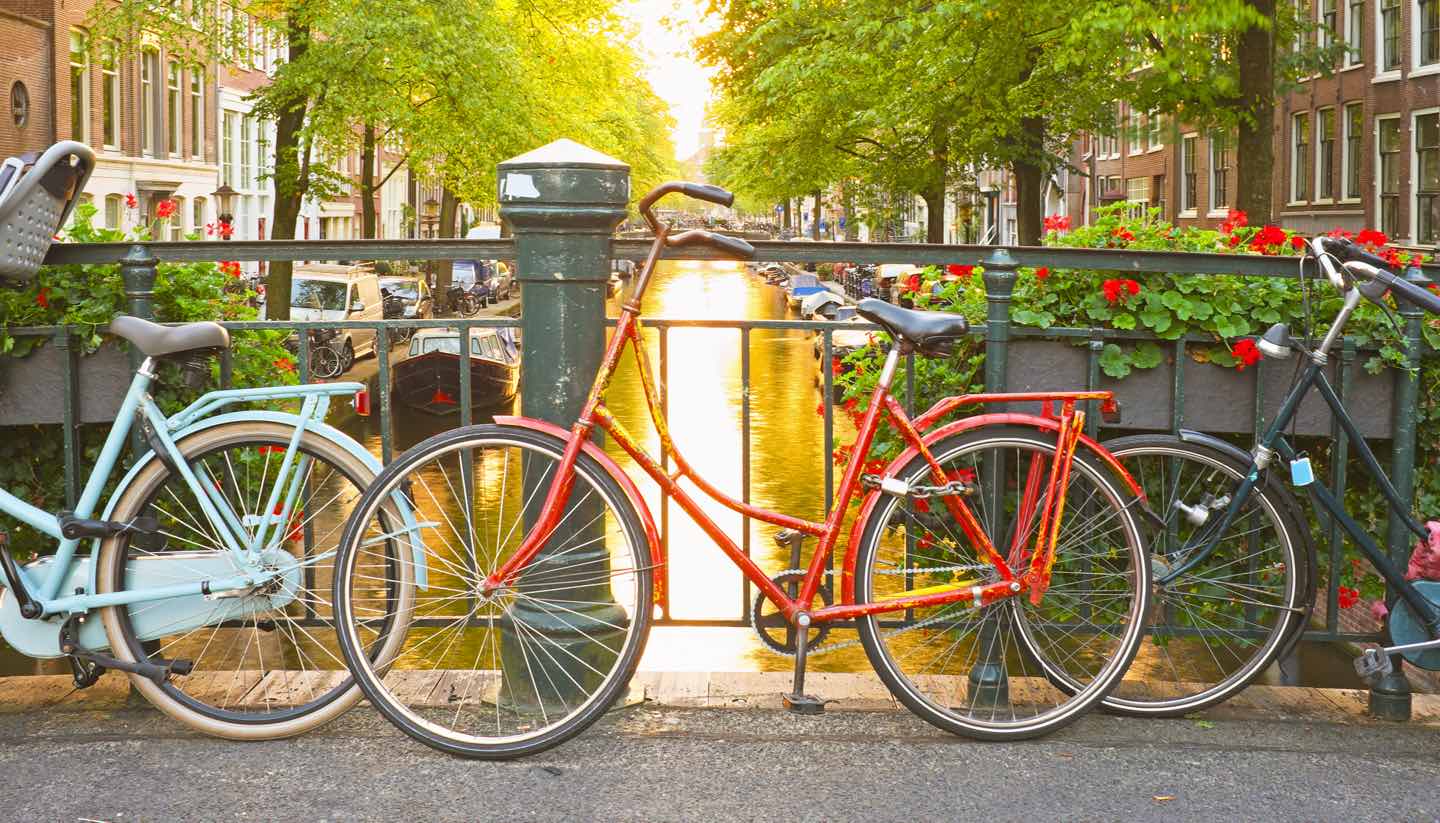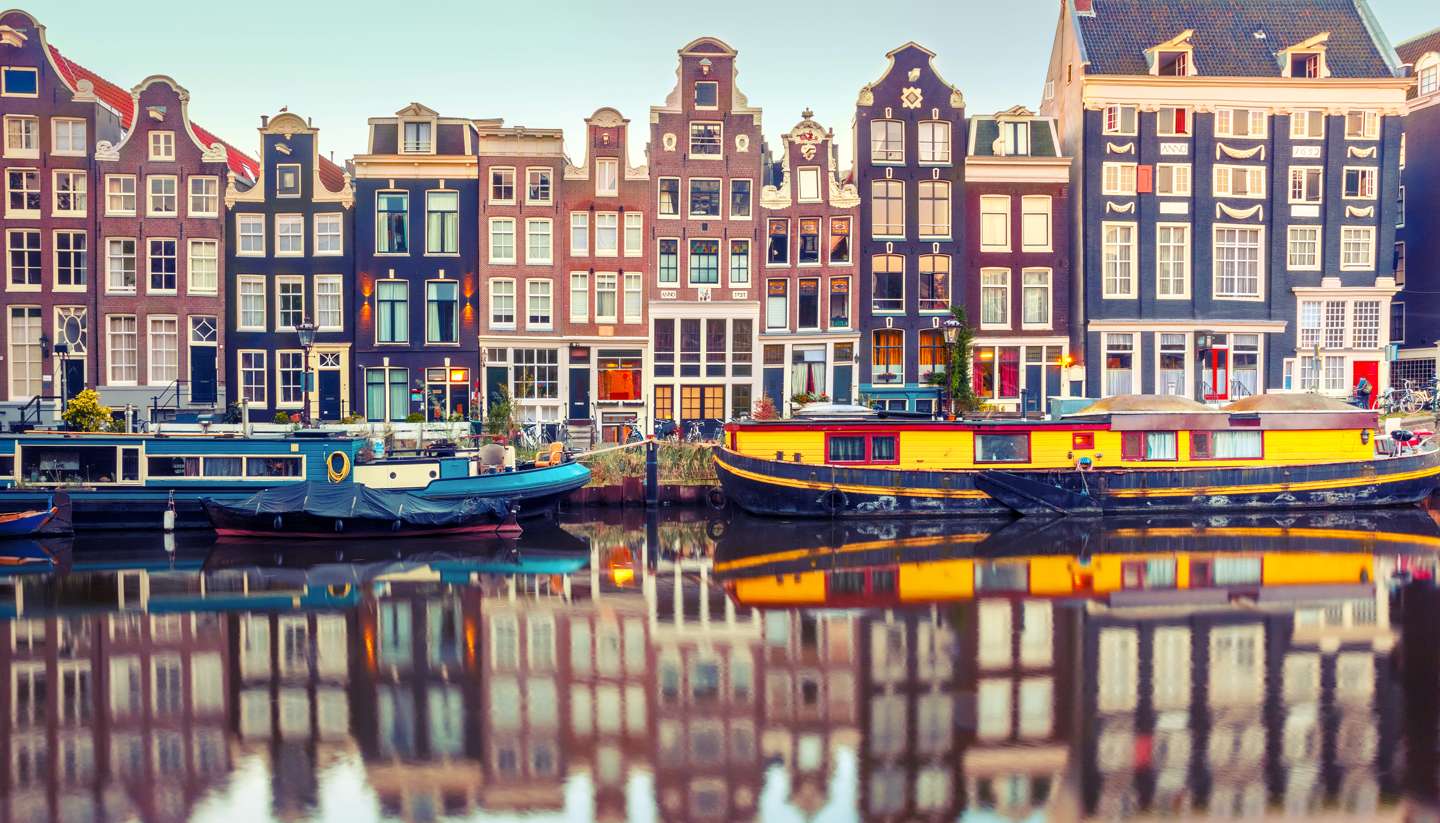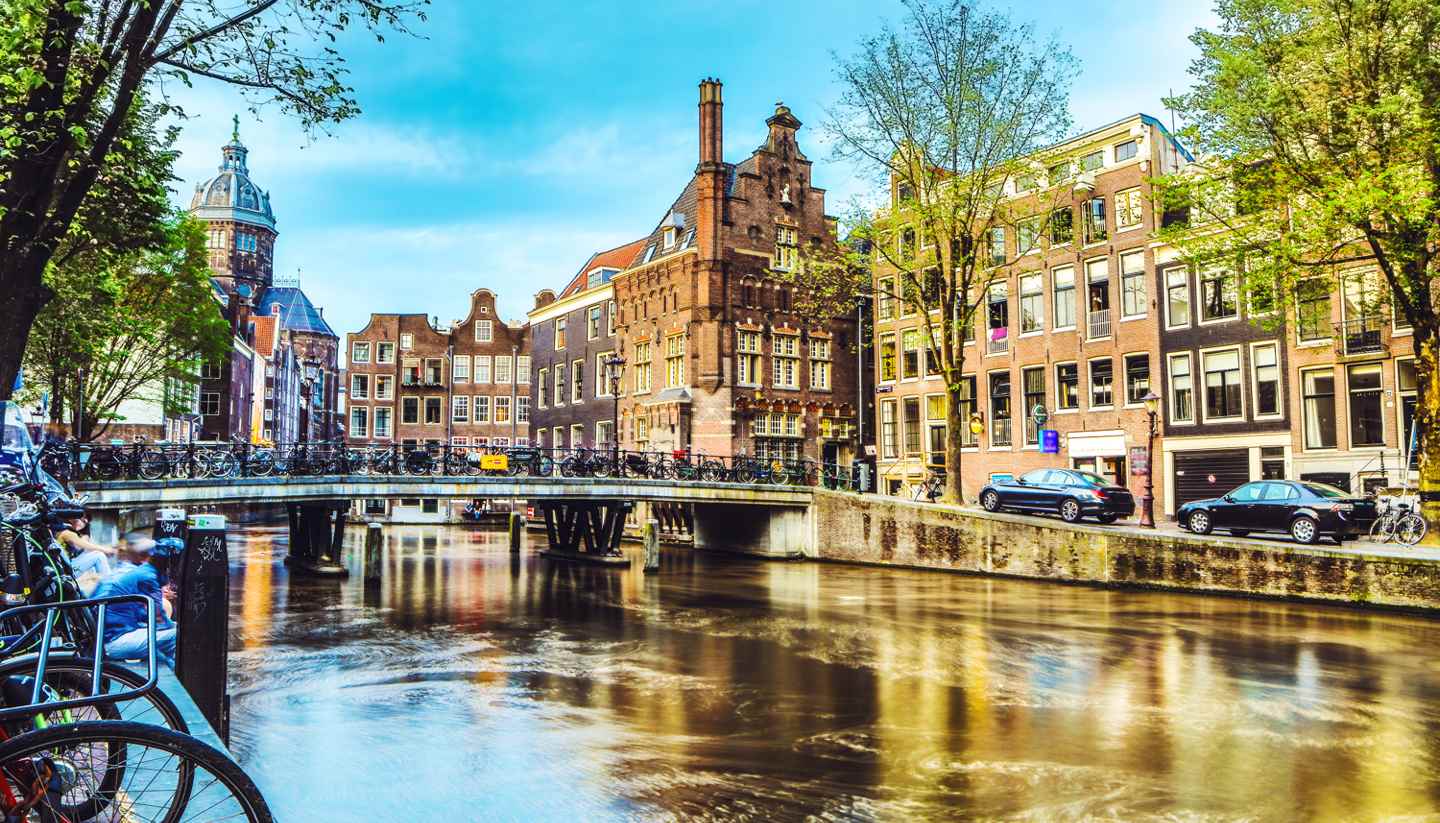Amsterdam Travel Guide
About Amsterdam
Far more than the illicit playground it's often made out to be, Amsterdam has an atmosphere all of its own, through an amalgam of canals, vintage bicycles, idyllic parks and scintillating galleries.
As much a legacy of the city's illustrious past as the canals is Amsterdam’s legendary cosmopolitanism. With a population comprised of 175 nationalities, the city remains a global crossroads and an ever-vibrant centre of art, music and culture.
Aside from such monoliths of art as the Rijks and Van Gogh museums, there are myriad less-visited spaces on quirkier themes such as the Tulip Museum, the Player Piano Museum and the recently opened Museum Of Handbags and Purses.
The festival line-up is equally varied; devoted to everything from fringe theatre to minimal music to tattoos. Revelry peaks on King’s Day (formerly Queen’s Day), a birthday party for King Willem Alexander, when the capital is clad in patriotic orange and the canals brim with party boats.
But the city’s true charms are decidedly lower-key. Stop into a 'brown café' on a chilly evening and experience that unique blend of conviviality and cosiness the Dutch call gezelligheid.
When the sun finally emerges, Amsterdammers spill out onto café terraces or set up barbecues in the city’s numerous parks. While cars customarily blight the cityscapes of other capitals, a constant flow of bicycles only enhances Amsterdam’s beauty.
Much of the city’s appeal resides in its compactness; some see Amsterdam as a big village. Most visitors limit their explorations to the historic core and adjacent museum district, but it’s easy to go farther afield.
Just east of Central Station, the old Eastern Docklands zone stands as a stunning example of innovative architectural reuse. Further east is the green district of De Plantage with its botanical gardens and stately boulevards.
Yes, the illicit thrills are there too for those who want them, but Amsterdammers themselves take it all in their stride.





